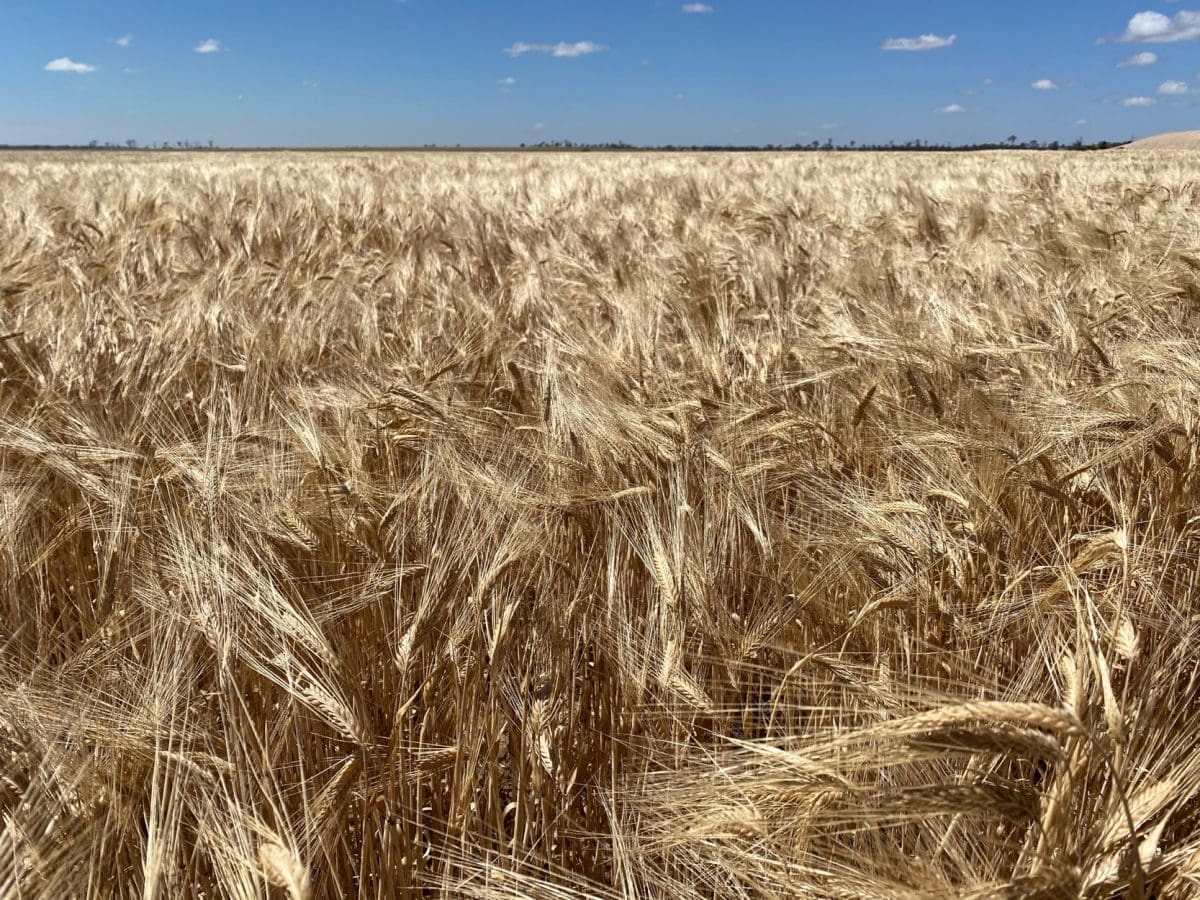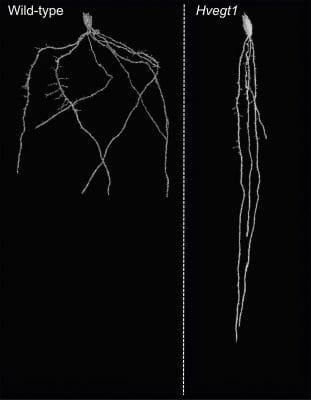
Malting barley growing in 2021-22. Photo: InterGrain
RESEARCHERS have discovered a new gene in barley and wheat that controls the angle of root growth in soil, opening the door to new cereal varieties with deeper roots that are less susceptible to drought and nutrient stress, thus mitigating the effects of climate change.
University of Adelaide’s School of Agriculture, Food and Wine researcher Dr Haoyu (Mia) Lou was joint first author on the study.
Working alongside scientists from the UK, Italy, Germany and the US, the team identified a new gene called Enhanced Gravitropism 1 (EGT1) in barley.
“We have found that mutants lacking function of the EGT1 gene exhibit a steeper growth angle in all classes of roots,” Dr Lou said.
“Remarkably, the roots behave as if they are overly sensitive to gravity – they are unable to grow outwards from the plant, and instead grow straight down.”
“By identifying the genes that control root growth angle, we can greatly aid efforts to develop crops that are better adapted to specific soil types and more resilient to fluctuating environmental conditions, helping to mitigate carbon burden and counter the effects of climate change.”

The EGT1 gene.
“The angle at which barley roots grow down into the soil enables them to capture water and nutrients from different soil layers.”
“Shallow roots enable plants to capture phosphate and surface water, while deeper, straighter roots can stabilise yield by accessing deeper water and nitrate; they can also bury carbon deeper in the soil.”
Australian farmers face a wide range of risks, and are particularly exposed to variability in climate which has a flow-on effect to commodity prices.
Severe droughts are frequent and prolonged with eastern and south-eastern parts of the country particularly badly affected.
Coupled with expensive fertiliser and increased pressure to achieve sustainability, there is a pressing need to develop new crop varieties better able to capture nutrients, carbon and water.
“These findings were made possible through exciting technologies such as X-ray CT, enabling root growth to be traced in soil,” co-author and Waite Research Institute deputy director Associate Professor Matthew Tucker said.
“They could immediately help cereal breeders to select varieties with straighter roots from their genetic stocks, or aid in the development and deployment of new EGT1 alleles in the near future.”
Dr Lou undertook the research as part of a joint PhD program with the University of Nottingham, UK.
The team’s findings have been published in the journal Proceedings of the National Academy of Sciences.
Source: University of Adelaide

HAVE YOUR SAY